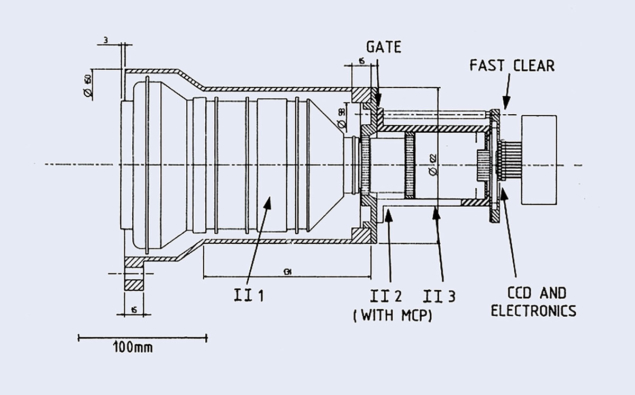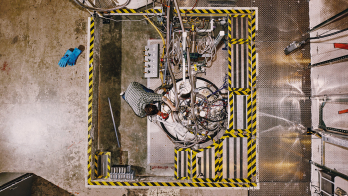In the January/February 1986 issue, CERN’s Georges Charpak described how the huge detectors under construction at the time incorporated ideas “once considered revolutionary, with no guarantee of success”. Two decades earlier, Charpak had himself invented such a technology, the multi-wire proportional chamber, and six years later he would be awarded the 1992 Nobel Prize in Physics – to date the last Nobel Prize in Physics to be awarded to a single person.

Every year sees the emergence of new breeds of detectors and the improvement of existing ones, but the innovations which go on to make a significant impact on physics research are limited. The large investment in man-years and money required for today’s large experiments can cool the enthusiasm generated by new detector ideas. However many of the huge detectors now under construction or planned incorporate ideas which were once considered revolutionary, with no guarantee of success. The groups building these detectors are often the most active centres of detector research.
Tracking
Fixing the trajectories of the particles emerging from a collision can be accomplished by solid state or gaseous detectors. With rare particles having only a short lifetime, accuracy, with its possible concomitant space and cost reductions, is of increasing importance.
Semiconductor microstrips (see March 1982 issue, page 47) and charge coupled devices (CCD, see June 1982 issue, page 179) are now established techniques, allowing trajectories in a plane to be measured down to about 5 microns.
The initial disadvantage of microstrips was the overhead of large surface electronics, but this has diminished with the emergence of low cost, high density integrated circuits. The considerable advantages of CCDs have led to the development of improved readout to handle high data rates. Solid state drift chambers with their simpler readout also look promising.
Despite the emergence of solid state detectors, there is continual interest in the more traditional gaseous detectors, with their unrivalled flexibility and ease of construction for large surfaces. One development aimed at increasing accuracy is higher pressure, where 4 atm appears optimal.
In principle the position of an ionization cluster can be measured down to 20 microns, but difficulties arise from the geometry of the chamber wires and in measuring distances for particles not travelling exactly parallel to a wire plane. Tracks parallel to anode wires have been fixed down to about 60 microns.
New techniques strive to improve this accuracy by measuring separate ionization electron clusters (H. Walenta), by grouping small individual drift tubes (Stanford), or by fitting many sense wires inside a readily interchangeable carbon tube (CERN). Other developments aim at improving position measurements along the wires.
Visual detectors
Improving the optics of bubble chambers by holographic means (see October 1983 issue, page 317) has increased accuracies down to 10 microns. However the limitations of bubble chambers for handling many close tracks have led people to look instead towards streamer chambers. Illumination of ionization avalanches by laser light (Munich/CERN) permits smaller avalanches to be picked up.

Accuracy is lost when ionization electrons start to diffuse before the triggering signal, but this can be overcome by a clever method (Yale) of temporarily attaching the electrons to a heavy (oxygen) ion, subsequently removed by laser irradiation.
At CERN, another development involves catching the avalanche electrons on mylar foil and developing the electrostatic image with an appropriate toner to give a track ‘xerox’.
One new material now increasingly being used is scintillating optical fibre, offering possibilities for both tracking and, when embedded in heavy materials, for electromagnetic calorimetry (energy deposition measurement).
The UA2 experiment at the CERN Collider is using plastic scintillating fibres in its current upgrade (see November 1985 issue, page 384). Other developments use glass fibres (Fermilab) and lead/fibre matrices for calorimetry (Saclay, see April 1984 issue, page 107).
Calorimetry
In the measurement of energy deposition, many developments aim to improve geometry, cost and energy resolution. Liquid argon calorimeters, a rarity not that long ago, are now firmly established, but work goes on to find liquids with more convenient ionization properties.

The electron yield of liquid argon can be improved by doping it with photosensitive liquids. However there is increasing effort to find suitable materials which operate at room temperature, in particular for the new calorimeter for the UA1 experiment at CERN (see November 1985 issue, page 384).
‘New’ methods for particle identification now being used include the Transition Radiation Detector, where optimal designs are now appearing, and the Ring Imaging Cherenkov (RICH). 100 m2 of RICH will be installed in the DELPHI detector for CERN’s new LEP electron-positron collider.
Heavy scintillators such as bismuth germanate (BGO) offer improved energy resolution for calorimetry. As a result of development work for the L3 experiment at LEP, the cost of BGO has been considerably reduced. However the more traditional and cheaper iodide materials continue to be attractive.
A newcomer material is barium fluoride, which permits scintillation photons to be measured in a wire chamber. This potentially considerable step forward, combining the photon stopping power of a heavy solid with the tested versatility of a wire chamber, enables energy deposition to be localized (see May 1984 issue, page 141).
One new and simple detector now being investigated at CERN relies on emitted light, rather than electronic signals, to localize ionization avalanches. A lot of work went into finding the best geometry and gas mixture (noble gases and triethylamine), and the payoff looks near.
If the hopes raised by these and other tests are fulfilled, experimental particle physics will have powerful new tools to exploit the conditions offered by the big machines now being built.
- This article was adapted from text in CERN Courier vol. 26, January–February 1986, pp2–6







